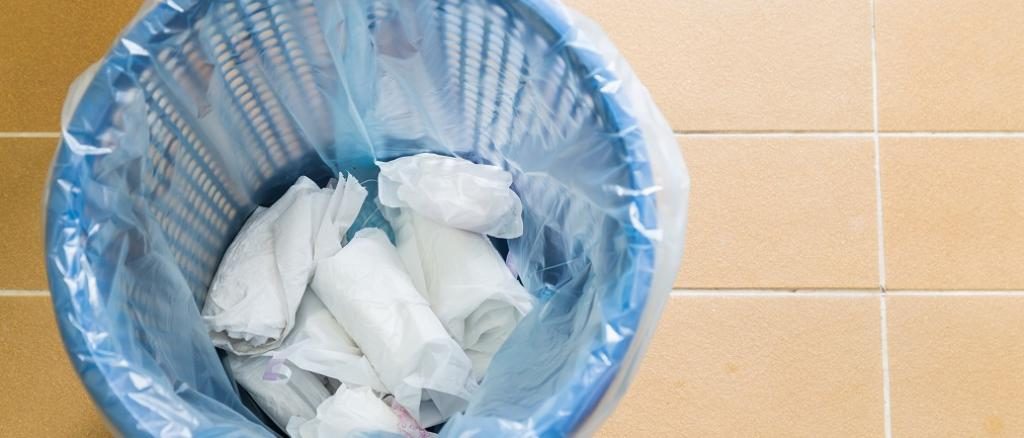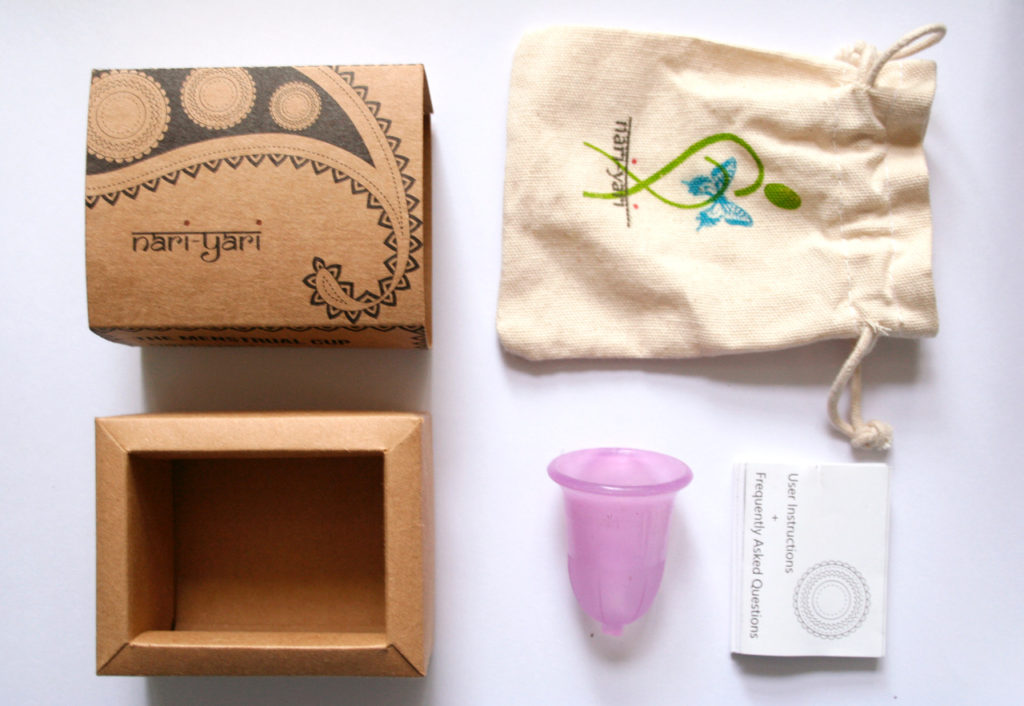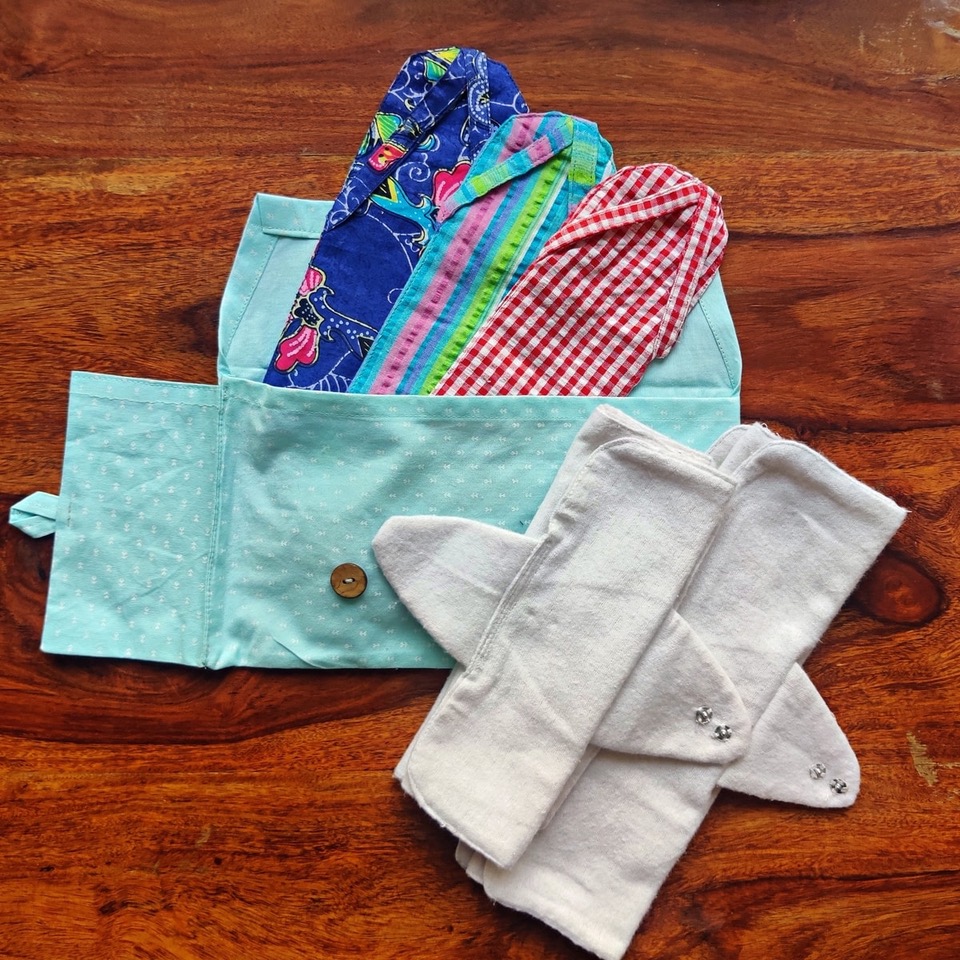I have been using menstrual cups for the past two and a half years. It was my goal to reduce waste that prompted me to stop using disposable pads. I had been tracking waste generation and collection mechanisms in India and my readings taught me that not only is India’s waste mismanaged but also that the existing infrastructure is over-burdened.
As someone who had grown up using disposable pads, I never once thought of what happens to them after they are discarded. Out of sight, hence, out of mind. I was completely oblivious to how soiled pads were clogging drains, festering in landfills or turning to noxious fumes after being incinerated in suboptimal conditions. The more I read, the more I was convinced of the need to take control of our waste and reduce what and how much we discard.
Most of the commercially available pads in India contain plastic and are non-biodegradable. Right from the packaging material, to the super absorbent polymers present in the core of the pads, to the flexible plastic wings (that wrap around the underwear and hold the pad in place), each of these components takes years to decompose. As menstruators continue to use commercially available disposable pads, the amount of plastic menstrual waste will only keep rising. Though a small part of the overall plastic waste, this non-biodegradable menstrual waste is by no means negligible. Research by the Menstrual Hygiene Alliance of India has estimated that out of 336 million menstruating women in India, around 36 % or 121 million use disposable pads.

Assuming each such menstruator uses 8 such pads per menstrual cycle, the total number of pads India’s waste management system has to deal with amounts to 12.3 billion per year, most of which are non-biodegradable.
Tracking the journey of used plastic pads was an eye opening experience for me. In India, used pads are collected as part of household waste. Segregation laws are seldom enforced and often menstrual waste, mixed with other compostable wet waste, ends up in landfills. If segregated, these are sent to incineration plants. Both methods of disposal in landfills and incineration pose their own risks to the environment and need to be studied further before they can be confirmed as efficient solutions. Many incinerators available in the market today do not perform optimally and emit toxic fumes, thereby polluting the atmosphere further. Sometimes, used sanitary napkins are just left to rot in roadside garbage dumps, creating unhygienic conditions within neighborhoods.
Understanding this made me look for available alternatives. That is when I turned to menstrual cups. There are several good brands available in the market currently. And the internet is filled with instructions and tips on how to use and maintain a menstrual cup. Learning to insert the cup can take some time. As it will be a completely new experience for those shifting from disposable sanitary pads, I would only say that it helps to keep an open mind and not give up easily. Although it took me a few cycles to adjust, my experience with the cup has been very smooth.
The freedom and comfort you experience with menstrual cups will ensure you never go back to disposable pads again !
 A few rituals I follow when using the menstrual cup include:
A few rituals I follow when using the menstrual cup include:
- Sterilizing the cup in boiling water for 5 to 6 minutes before use in every cycle
- Sanitizing hands before and after inserting or removing the cup
- Emptying the collected fluid in the cup not later than 8 to 10 hours; and
- After use in each cycle, sterilizing the cup and storing it in a clean and dry cloth bag
I also purchased a set of cloth sanitary napkins recently, for those days of light bleeding when a menstrual cup is not necessary. They are also great for people who are not comfortable inserting menstrual cups.
Again, the internet is replete with information on using and maintaining cloth napkins. However, few basic hygiene rituals that I follow include:
- Having them washed clean and ready before the start of every cycle
- Post use and wash, drying them in sunlight, if possible. However, open-air drying without sunlight has also worked for me; and
- Storing them in a clean and dry bag after wash
The menstrual cup and the cloth sanitary napkin sets are essentially one-time purchases that not only help me save the monthly expense of buying disposable sanitary napkins but also ensure that I leave a softer waste footprint.
One of the important aspects of sustainability is waste management, which is best expressed through the set of 3 actions beginning with the letter R – Reduce, Reuse and Recycle. Given the problem of menstrual waste and the array of alternatives available today, we have a great opportunity to put to practice the first 2 of these 3 Rs – reduce waste from disposed plastic pads and choose reusable alternative menstrual hygiene products. It is time each of us made our own sustainable menstruation kits!
 About the Author
About the Author
Nityapriya Subhash is deeply interested in issues of environment and sustainability. When not working, she is trying to figure out the best way to spend time on earth and leave a softer footprint while at it.


